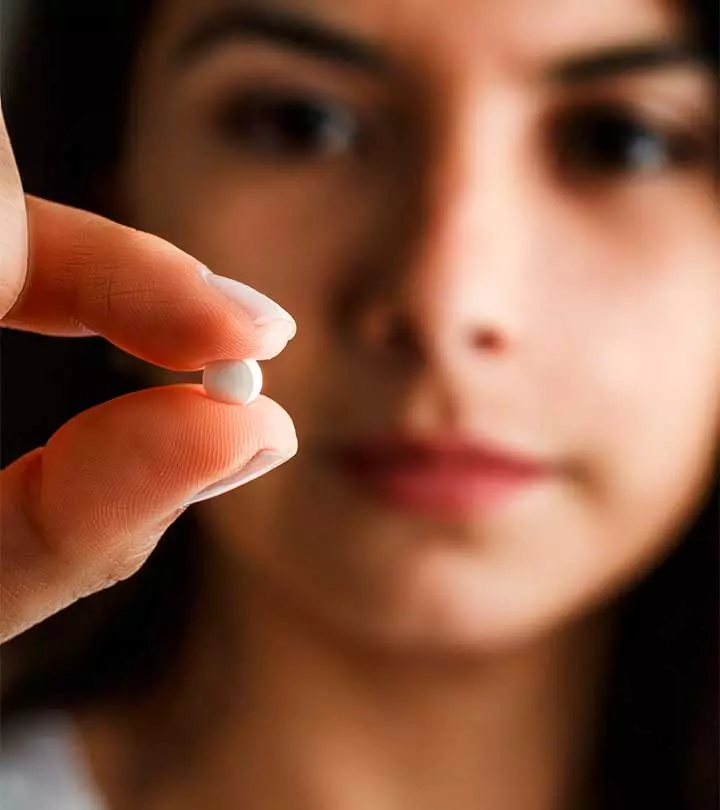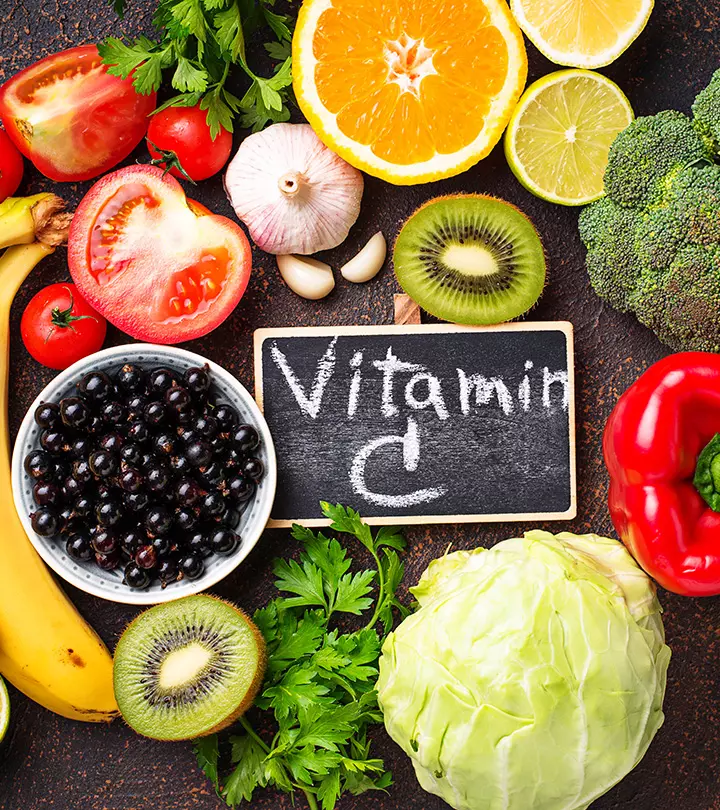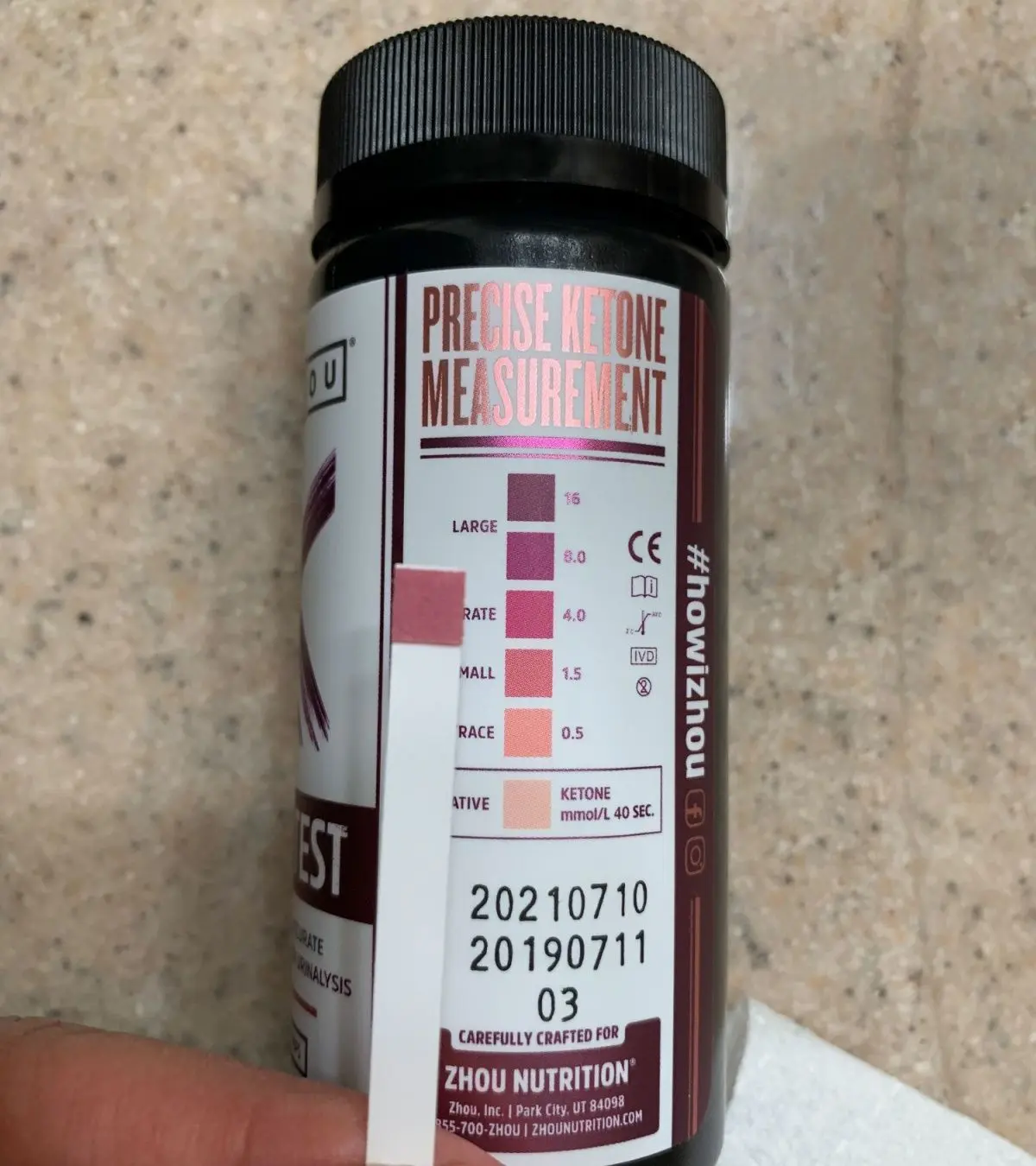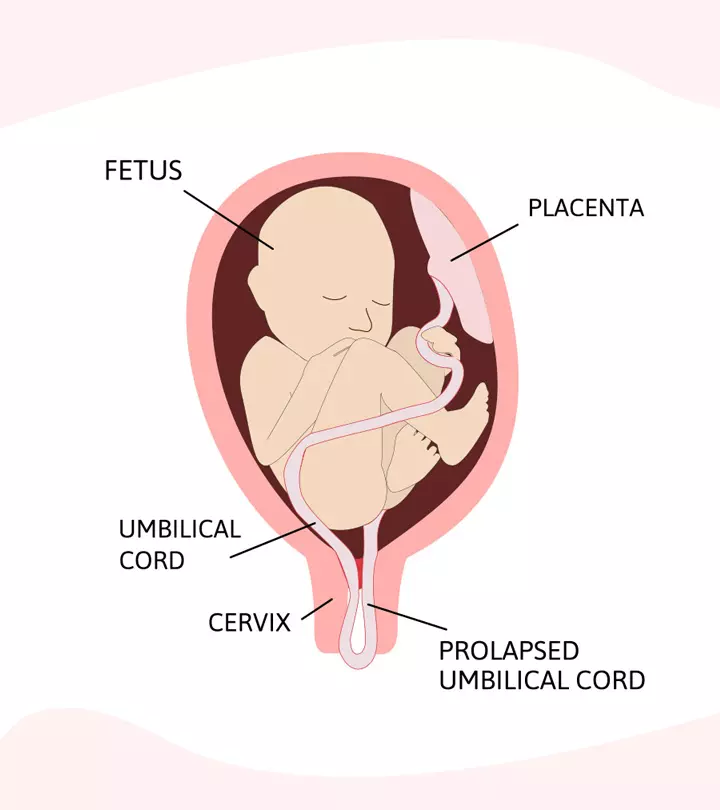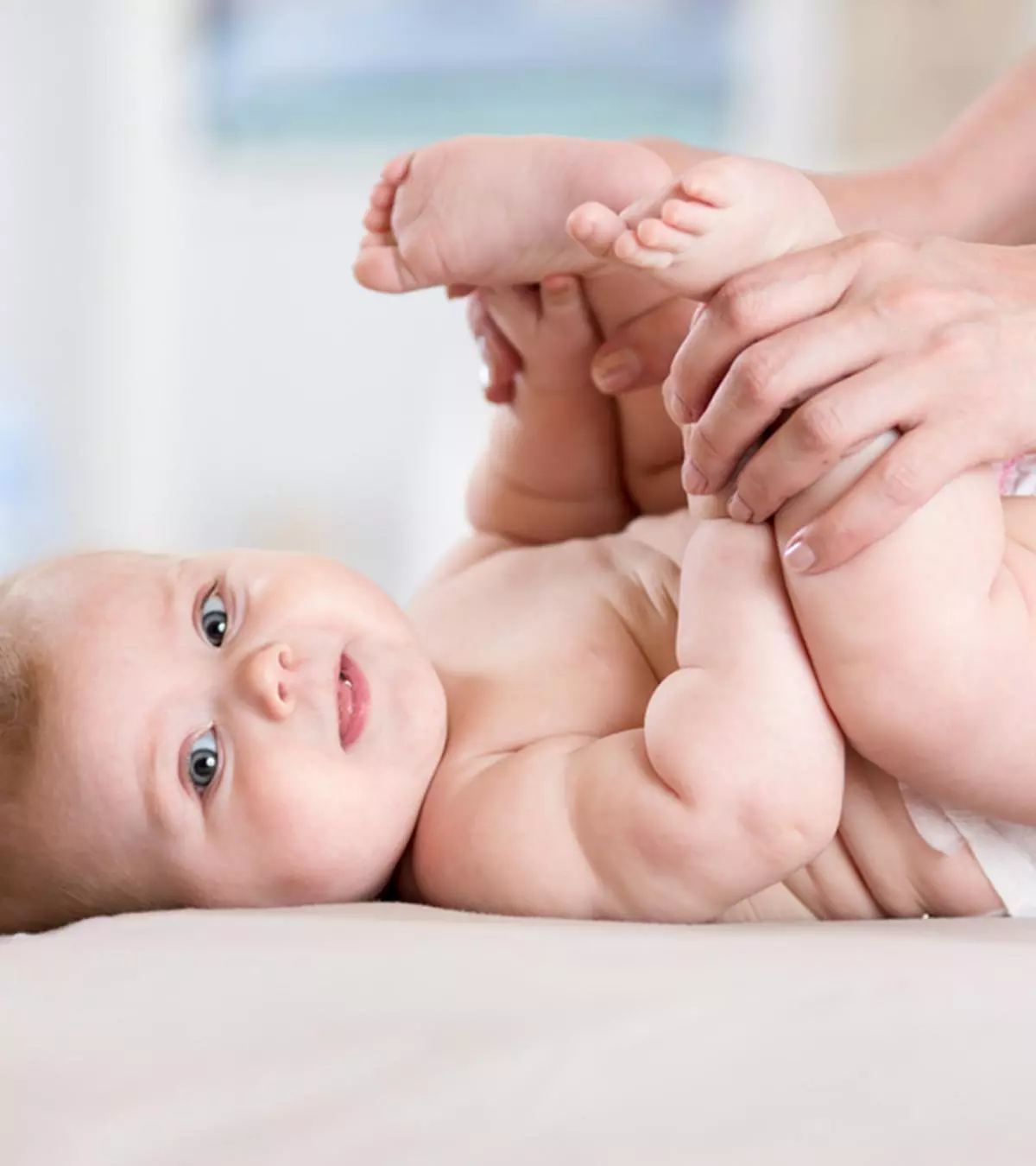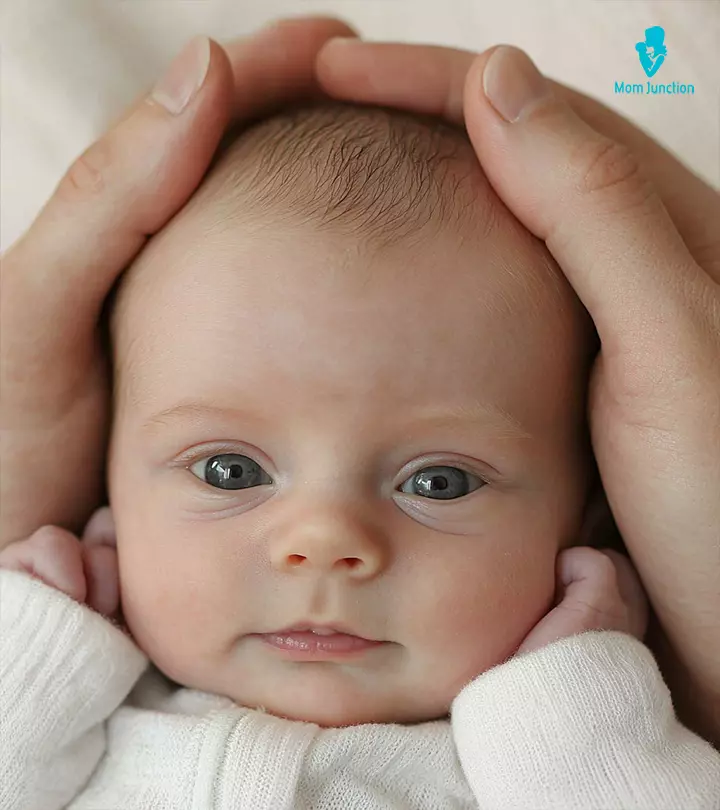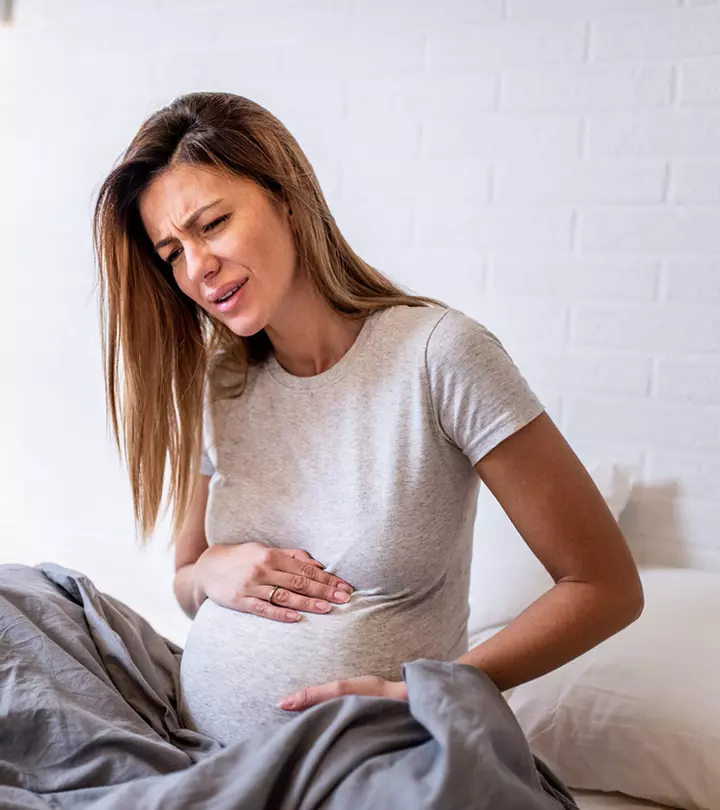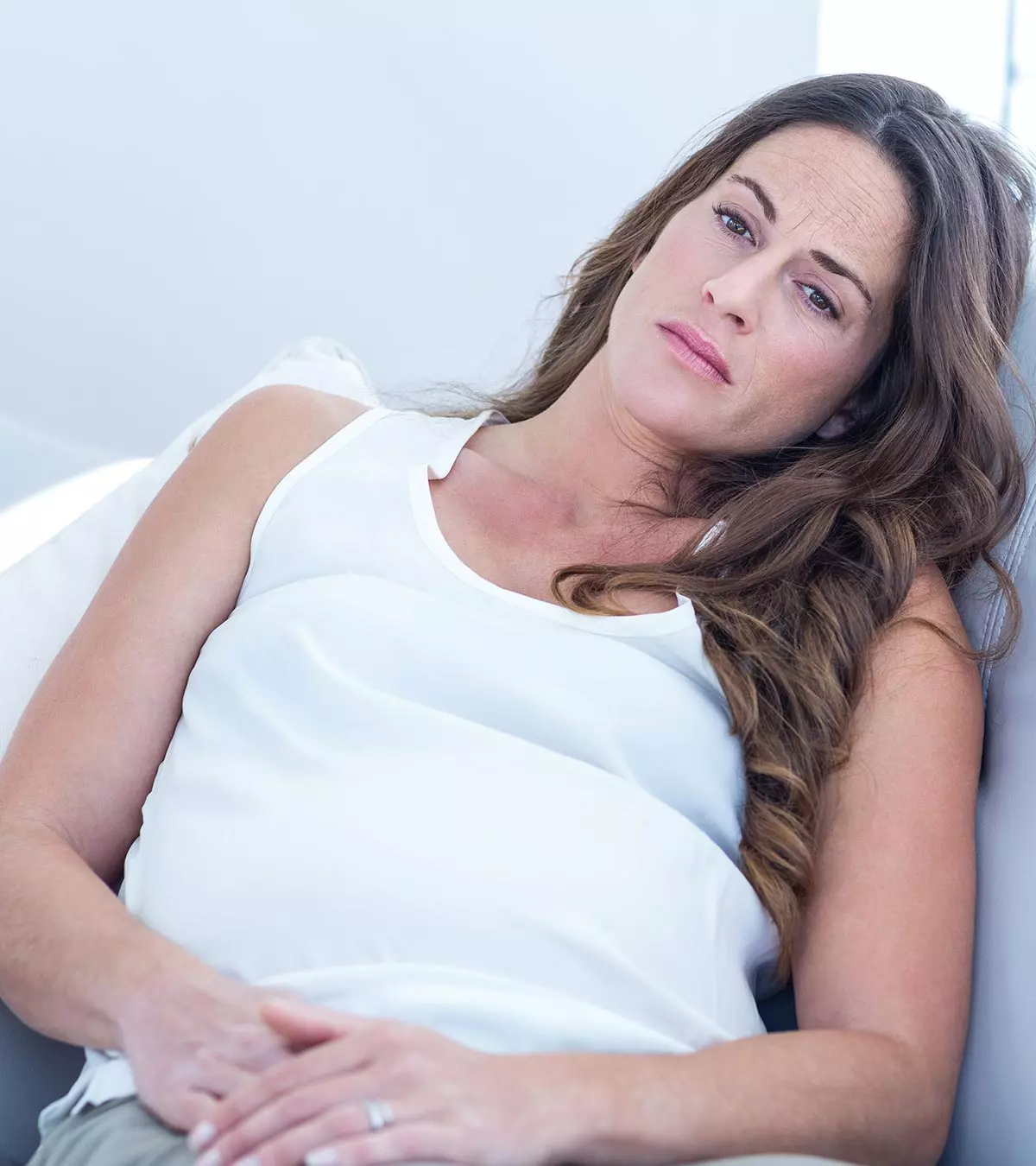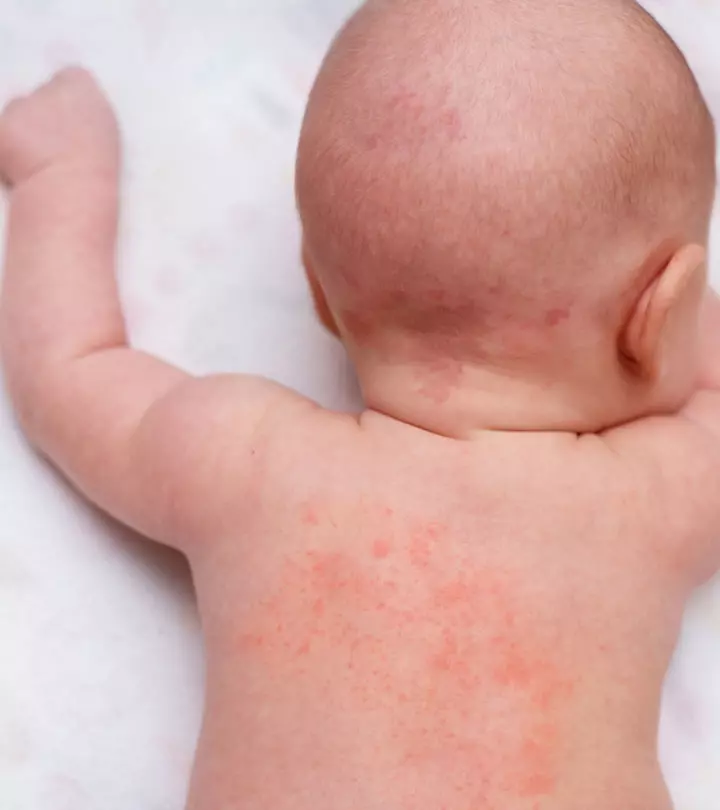
Image: Shutterstock
Heat rashes affect about 40 percent of newborns, mostly in the first month of their lives (1). A baby’s heat rash is often due to underdeveloped sweat glands. However, in some cases, baby heat rash may occur due to the blockage and inflammation of sweat glands or overheating. This can be made worse by hot weather, humidity, or wearing too many layers of clothing. Irrespective of the cause, these rashes can be treated with home remedies after consulting a pediatrician. Read about the types, symptoms, risk factors, treatment, and prevention of heat rash in babies.

Key Pointers
- Underdeveloped sweat glands may cause heat rashes in babies.
- Itching, red bumps and swelling, and water blisters are a few symptoms to look for.
- Cleaning the skin folds, keeping the baby dry and cool, and using a cold compress could help treat heat rashes in babies.
Types Of Heat Rashes In Babies
Heat rashes, also known as prickly heat or miliaria, can be of different types, depending on the location of the skin rash, its clinical features, and other factors, such as the baby’s age (2) (3) (4).
- Miliaria crystallina: This sub-type of heat rash is commonly seen in the neck, trunk, and head areas. Miliaria crystallina mostly affects babies aged two weeks or less and is caused due to the obstruction of the sweat gland duct right beneath the skin’s surface (in the stratum corneumiOutermost layer of the skin that protects the body from water loss and foreign materials of epidermis).
- Miliaria rubra: It is the most common type of heat rash that might be seen in babies between one and three weeks of age. It is caused due to the blockage of the sweat gland duct present in the deeper layers of the skin (below stratum corneum). Pediatrician and neonatologist Dr. Supriya Wakchaure recalls a case where a three-week-old baby was brought in with red, itchy bumps on the neck and chest. She says, “The parents had been swaddling the baby tightly in warm clothing during a heatwave. Upon examination, it was diagnosed as miliaria rubra. The parents were advised to keep the baby in a cool environment, dress her in loose cotton clothing, and avoid over-bundling the baby. With these measures, the rash subsided within a few days.”
- Miliaria profunda: This form of heat rash happens due to the blockage of sweat gland ducts at the junction of epidermis and dermis, the deepest layer of skin. This is the rarest form of miliaria, and it seldom occurs in babies.
Symptoms Of Heat Rash In Babies

Babies experiencing heat rashes may encounter the following symptoms (5) (6).
- Skin redness accompanied by small bumps (miliaria rubra)
- Severe itching
- Prickling or slight burning sensation
- Watery blisters (miliaria crystallina)
- Swelling around the rashes
- Formation of pustules (miliaria pustulosa)
The most common areas where heat rashes occur are skin folds, such as neck folds and skin folds in the diaper area.
Treatment For Heat Rash In Babies
Miliaria crystallina usually go away within a day with no treatment. Medicinal creams or ointments are not usually recommended for the treatment of heat rashes in babies. Miliaria rubra may require application of topical steroid and miliaria pustulosa may require the application of topical antibiotics, if advised by a doctor. You may consider the following steps to reduce the intensity of the rashes and alleviate any irritation or discomfort (5) (6) (2).
- Cool the skin using a cloth dipped in cold water (cold compress).
- Dress your infant in light clothing and loosen their diaper if it rubs against the rashes.

- Clean the sweat in skin folds and ensure that they remain dry.
- Keep your baby cool with the help of an air conditioner or a fan.
- Treat febrile illnessesiAn illness that has the symptoms of a fever .
- In severe cases, a 1% hydrocortisone cream or calamine lotion may be applied.
A mother of three who also maintains a blog has shared her experience dealing with her son’s heat rash. She reflects, “My son had prickly heat rash. We live in a desert, and it was 105 degrees the day he was born. I was putting too many clothes on him and keeping him swaddled with a blanket and a hat on him. His immature skin had pores that got clogged easily, and he had very sensitive skin. His rash resolved within hours by keeping him out of clothes, keeping him cool, and taking him into lukewarm baths with me. To this day he still sweats a lot but doesn’t get rashes anymore from sweating (i).”
 Did you know?
Did you know?Prevention Of Heat Rash In Babies
Baby heat rash are commonly caused due to the sweat blocked inside the skin layers (5) (6).
You may prevent this from happening with the following interventions.
- Do not overdress your baby in heavy layers of clothing and tight clothing, as it can block the sweat glands. Use light, breathable fabrics.
- Give the child a cool bath without soap for ten minutes, and allow the skin to air dry. You may repeat this thrice daily, especially if the child has large rashes.
- Keep the indoors cool.
- Check for signs of overheating.
- Do not put ointments, powders for oily creams, or oil on your baby’s skin or scalp as they block the skin’s pores.
- Ensure the skin folds near the neck or other body parts are clean and dry. Unclean skin folds near the neck can cause baby neck rash.
- Ensure adequate ventilation in the baby’s room.
- Avoid keeping the child strapped into a baby seat for long durations.
 Quick tip
Quick tipWhen To Call The Doctor

Baby heat rash usually gets better on their own within 24 hours. However, contact your baby’s pediatrician if the inflamed skin persists, the rashes become enlarged, tender, and show no signs of healing after a few days. Other symptoms to look out for are (7):
- Pus in the rash
- Fever
- Swelling of the lymph nodes near the armpit or neck
- Pain and swelling surrounding the areas affected by the rash
- Constant fussiness
- Irritation interferes with the baby’s sleep and appetite
Frequently Asked Questions
1. Is coconut oil good for heat rash?
Although coconut oil might temporarily soothe skin irritation due to a heat rash, it could block the skin’s pores, exacerbating the skin rash. Avoid applying any substance except cold water compress on the heat rash. Some hypoallergenic water based moisturizing lotions might help, but should be used only when advised by a doctor.
2. Does breast milk help heal heat rash?
Breast milk is known to contain moisturizing and healing properties. But applying it to the area affected by a rash is not recommended as it might lead to contradictory results.
3. Is aloe vera good for baby heat rash?
Aloe vera gel has healing properties and provides a cooling and soothing effect when applied to the skin. So, you may use this gel to treat baby heat rash. However, consult a doctor before doing so. If your baby develops any allergy, discontinue using it. Also, avoid using aloe vera if your baby has developed wounds or pus due to the rash (8).
Heat rashes are a type of rashes in babies commonly seen during hot and humid weather. They usually go away on their own within a few days without the need for medical attention. However, if the rashes persist for more than a few days, it is advised to consult your child’s pediatrician. Dressing up your baby in light and breezy clothes may help reduce the chances of baby heat rash.
Infographic: Risk Factors For Heat Rash In Babies
Heat rash in babies can be uncomfortable due to itching and blistering. As parents, you would not want your baby to experience this. Hence we have provided the factors that increase the risk of developing these rashes. Read this infographic to learn about the risk factors and avoid them to minimize the chances of developing the rash.
Some thing wrong with infographic shortcode. please verify shortcode syntax
Some thing wrong with illustration image shortcode. please verify shortcode syntax
Personal Experience: Source
MomJunction articles include first-hand experiences to provide you with better insights through real-life narratives. Here are the sources of personal accounts referenced in this article.
i. Prickly heat rash?https://journeytocrunchville.wordpress.com/2008/09/06/prickly-heat-rash/
References
- Newborn Skin: Part 1. Common Rashes.
https://www.aafp.org/pubs/afp/issues/2008/0101/p47.html - When Your Child Has Heat Rash (Prickly Heat).
https://www.saintlukeskc.org/health-library/when-your-child-has-heat-rash-prickly-heat - Karla C. Guerra, Alicia Toncar, and Karthik Krishnamurthy; (2025); Miliaria.
https://www.ncbi.nlm.nih.gov/books/NBK537176/ - Miliaria.
https://www.aocd.org/page/Miliaria - Heat rash.
https://www.healthychildren.org/English/ages-stages/baby/bathing-skin-care/Pages/Heat-Rash.aspx - Heat Rash.
https://www.seattlechildrens.org/conditions/a-z/heat-rash/ - How to cool down your child’s heat rash?
https://health.clevelandclinic.org/child-heat-rash-cool-heres/ - Aloe.
https://www.mountsinai.org/health-library/herb/aloe
Community Experiences
Join the conversation and become a part of our nurturing community! Share your stories, experiences, and insights to connect with fellow parents.
Read full bio of Dr. Shaon Mitra

Dr. Supriya Wakchaure is a renowned pediatrician and neonatologist from Surat, Gujarat, India. She has worked at top medical colleges and government hospitals, including KEM Hospital, Mumbai and Civil Hospital, Surat. She has presented various research papers. Dr. Wakchaure is the founder of several mother-support groups. Her services include growth and development evaluation management, allergy testing, tonsillitis treatment, congenital disorders evaluation and treatment, among others.
Dr. Supriya Wakchaure is a renowned pediatrician and neonatologist from Surat, Gujarat, India. She has worked at top medical colleges and government hospitals, including KEM Hospital, Mumbai and Civil Hospital, Surat. She has presented various research papers. Dr. Wakchaure is the founder of several mother-support groups. Her services include growth and development evaluation management, allergy testing, tonsillitis treatment, congenital disorders evaluation and treatment, among others.
Read full bio of Sanjana Bhattacharjee
Read full bio of Rohit Garoo
Read full bio of Anindita Ghatak






